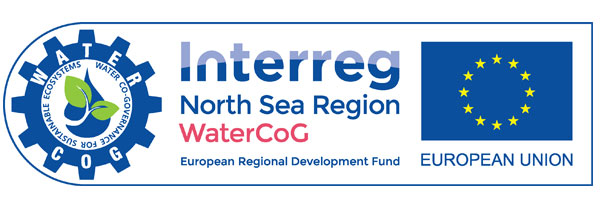The Waterpocalypse: Flooding
Emily Cooper
28/08/19
This World Water Week, we’re investigating four of the most serious threats facing water across the globe: the Four Horses of the Waterpocalypse.
Like all natural disasters, flooding has a role to play in our ecosystems.
Floods can be a good thing (when in the right place); they create habitats for wildlife, facilitate the movement of nutrients, and clean gravel which is important for fish and insects. In recent times, however, flooding has become more frequent and severe, devastating the communities which it affects. Living in harmony with rivers and coastal waters whose levels fluctuate so wildly is difficult—but has it always been that way?
 In addition, by returning our rivers to a more natural state, we can increase their resilience to periods of high rain. By increasing vegetation cover and restoring meanders, we can help to slow the flow of water, reducing the risk of downstream flash floods.
Wetlands are like natural sponges, helping to soak up and store excess water in the environment. Over the years, many of these precious habitats have been cleared to make way for agriculture and development. Last year alone, Rivers Trusts created or restored 73 wetlands. By boosting the proportion of land occupied by wetlands, we can begin to build up areas of water storage which help the land to cope with flooding.
This blog post has been supported by the WaterCo-Governance (WaterCoG) project under the Interreg North Sea Region VB Programme, funded by the European Regional Development Fund.
In addition, by returning our rivers to a more natural state, we can increase their resilience to periods of high rain. By increasing vegetation cover and restoring meanders, we can help to slow the flow of water, reducing the risk of downstream flash floods.
Wetlands are like natural sponges, helping to soak up and store excess water in the environment. Over the years, many of these precious habitats have been cleared to make way for agriculture and development. Last year alone, Rivers Trusts created or restored 73 wetlands. By boosting the proportion of land occupied by wetlands, we can begin to build up areas of water storage which help the land to cope with flooding.
This blog post has been supported by the WaterCo-Governance (WaterCoG) project under the Interreg North Sea Region VB Programme, funded by the European Regional Development Fund.


Why is flooding worse now?
Climate change means that severe rainfall is becoming more frequent. When rain falls at a normal pace, it has a chance to drain away into the soil, but severe rainfall means that water accumulates faster than it can drain away. Speaking of soil, much of ours is incredibly compacted due to intensive grazing and agriculture. Compacted soil means that water just rushes off of the surface, rather than soaking in. This lack of drainage can cause localised flooding. Many of our rivers have been heavily modified to accommodate anthropogenic needs. Many have been straightened, removing the natural meanders which slow water flow. As a result, when heavy rainfall occurs, this water rushes downstream at a rapid pace. We have lost a huge proportion of our wetlands which store water. This, combined with the loss of other green spaces across the UK, has massively reduced the land's ability to mitigate floods. Replacing natural terrain with concrete and other impermeable barriers means that water has no choice but to accumulate on the surface.The truth about flooding in the UK
If you live in an area which doesn't flood regularly, it can be difficult to appreciate the scale and severity of flooding. These statistics really drive the reality of the problem home. Thank you to Rainbow-Int for collating these statistics.- Around 2.4 million properties in the UK are at risk from coastal and river flooding each year
- An added 2.8 million are vulnerable to surface water flooding
- 1/6 UK properties are located in areas with a significant flooding risk
- When flooding impacts a business, up to 40% of these organisations do not re-open
- Victims of flooding can suffer decreased levels of mental health for more than 2 years after the event
- Annually, flooding costs the UK economy £1 billion
What are Rivers Trusts doing?
Across the UK, Rivers Trusts are encouraging and implementing the use of Natural Flood Management. As the name suggests, this management technique involves the use of natural materials and processes in order to prevent flooding. The video below from Yorkshire Dales Rivers Trust gives a fantastic overview of some of the methods used.